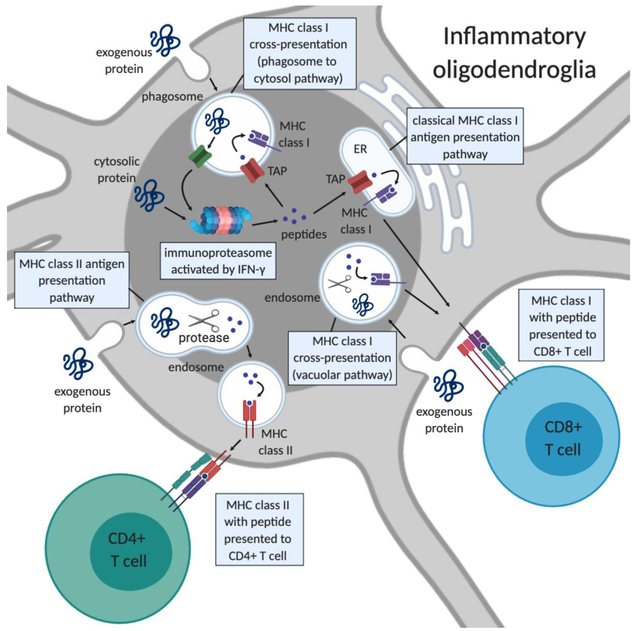Fig. 2.
Pathways of antigen presentation by inflammatory oligodendroglia to T cells. In MHC class II antigen presentation, exogenous proteins are processed by proteases in the endosome and assembled onto MHC class II molecules. MHC class II-peptide complexes are transported from the late endosome to the cell surface where they can engage T cell receptors on CD4+ T cells. In classical MHC class I antigen presentation, intracellular proteins are processed by the immunoproteasome and peptides are transported into the endoplasmic reticulum (ER) by TAP. Peptides are then loaded onto MHC class I molecules and the MHC class I-peptide complexes are transported to the plasma membrane where it can engage T cell receptors on CD8+ T cells. Cross-presentation pathways involve processing of exogenous proteins for presentation on MHC class I molecules to CD8+ T cells. In the phagosome-to-cytosol cross-presentation pathway exogenous proteins are taken up by phagosomes and transported to the cytosol where they undergo processing by the immunoproteasome and resulting peptides are transported back into the phagosome by TAP and loaded onto MHC class I molecules. In the vacuolar cross-presentation pathway exogenous proteins are taken up in vacuoles and transported to endosomes where they are processed by proteases and loaded onto MHC class I molecules. Not depicted in this figure are two other mechanisms for acquiring exogenous peptides for presentation on class I- transport of peptides through gap junctions from neighboring cells and transfer of plasma membrane MHC class I peptide loaded complexes by direct cell contact with a donor cell a mechanism termed cross-dressing that has been shown to occur in dendritic cells. Figure created with BioRender.com.

